calsfoundation@cals.org
Garage Bands
With the arrival of the Beatles on American shores in 1964, the “British Invasion” became a national pop-culture phenomenon. Representing the second generation of rock and roll, wave after wave of English rock groups—such as the Rolling Stones, the Animals, and the Who—followed the Beatles during the next two years. Teenagers across the United States were inspired to form four- or five-member bands patterned after their British role models. Because they often practiced in garages, these amateur groups came to be known as “garage bands.”
Like many mid-sized American cities, Little Rock (Pulaski County) witnessed a mid-1960s explosion in the number of neighborhood teenage groups, all competing for school, fraternity house, or country club engagements. Other cities and towns in Arkansas, such as Hot Springs (Garland County), Fayetteville (Washington County), Jonesboro (Craighead County), Paris (Logan County), and Pine Bluff (Jefferson County), experienced the garage-band boom, but Little Rock offered several advantages to groups hoping for a shot at fame. Aspiring rock stars found their favorite records at Moses Melody Shop on Main Street and occasionally performed there for Saturday KALO radio broadcasts. Some cut demo discs at Jaggars Recording Studio on South Johnson Street, while others who wanted a shot at the Top 40 taped sessions for commercial release through E&M Recording Company and My Records at 2911 West Markham Street. (Although most of the bands cutting records were from Little Rock, out-of-town groups such as the Egyptians, from Hot Springs, also recorded for the My Records label.)
The Spyders were among the first of the Little Rock garage bands, forming in 1964. The band was made up of Ralph Payne, lead guitar; Wally Lehle, rhythm guitar; Dane Fulmer, vocals; Ron Hughes, vocals; Jim Vaughter, bass; and Doug Fulmer, drums. The group made one recording at Jaggars Studio, in one take with one microphone.
The Checkmates featured Mark Abernathy, lead vocals; Jim Pearsall, bass; Mike McCarroll, drums; Larry Storthz, rhythm guitar and vocals; and Chip Payne, lead guitar.
Another early group, the Coachmen, was one of the most popular and long-lasting, featuring vocalist Dave Mayo; drummer Steve Hockersmith; guitarists Tommy Roberts and Johnny Baumgardner; and bassist Buck McArthur. Their self-released 1966 single, “Jamie” / “Stand By Me,” harkened back to pre-Beatles rhythm and blues influences, while their 1967 My Records release showcased two polished, original songs, the ballad-like “Tears of Blue” and the Stax-Volt-flavored “I’ve Had Enough.”
Matching the Coachmen in professional perfectionism and popularity were the Romans, consisting of Gary Hall (lead vocals, rhythm guitar), Phil Miller (lead guitar), Rocky Hestes (keyboard, vocals), Charles Wycott (bass), and Greg Kempner (drums). The group had a local hit with a 1966 My Records single, the Byrds-influenced “I’ll Find a Way.” Reconstituted in 1967 as Merging Traffic, the group expanded with new members Richard Shook (bass, vocals), Bob Younts (sax, vocals), Bobby Lincoln (trumpet), and Jim Matthews (who replaced Kempner on drums). After scoring well locally with the 1968 My Records release “Ain’t No Need,” on which the band displayed a mastery of the Memphis horn sound, Merging Traffic was signed by Decca, a major label, and had a minor national hit with “Bit By Bit.”
A band that blended what would come to be called “alternative” music with mainstream pop and soul was the Culls. Steve Baldwin (vocals), Dan Kenner (lead guitar), Mike Anders (rhythm guitar), Dub Elrod (bass), and Jim Orahood (drums) explored lesser-known material by the Yardbirds, Them, and the Kinks. Their 1967 My Records cover of the Pretty Things’ “Midnight to Six Man,” paired with the Burt Bacharach standard, “Walk on By,” received a lot of radio airplay and became a kind of cult favorite, surfacing some years later on a British album devoted to American garage bands.
Another notable Little Rock group of the era was the Dutch Masters, an experimentally daring group with a proto-punk attitude, headed by Blake Schaefer. The Light Brigade, a true house-party band led by brothers Lonnie and Ronnie Cole, lasted longer than any of the others, playing gigs across the southeast United States for several years. The garage bands of the 1960s set the stage for the growth of a vibrant rock-music scene in Little Rock with the garage-band revival of the 1980s and 1990s. The efforts of these various bands were archived on a compact disc, The Little Rock Sound, 1965–69, compiled by Bill Jones and issued by the Butler Center for Arkansas Studies at the Central Arkansas Library System in 1999.
For additional information:
Hall, Ron. Playing for a Piece of the Door: A History of Garage and Frat Bands in Memphis, 1960–1975. Memphis: Shangri-La, 2001.
Hicks, Michael. Sixties Rock: Garage, Psychedelic, and Other Satisfactions. Urbana: University of Illinois Press, 1999.
The Little Rock Sound, 1965–69. Liner notes by Bill Jones. Little Rock: Butler Center for Arkansas Studies, 1999.
William B. Jones Jr.
Bottle Imp Archives, Little Rock
 Arts, Culture, and Entertainment
Arts, Culture, and Entertainment Music and Musicians
Music and Musicians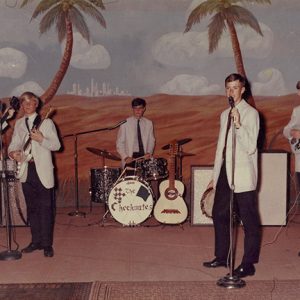 The Checkmates
The Checkmates  Chessmen
Chessmen 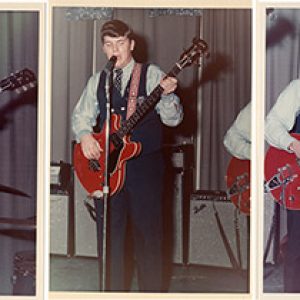 The Coachmen
The Coachmen 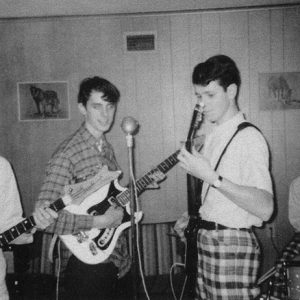 The Culls
The Culls 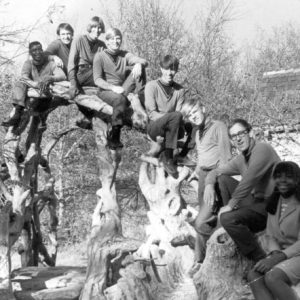 The Dutch Masters
The Dutch Masters 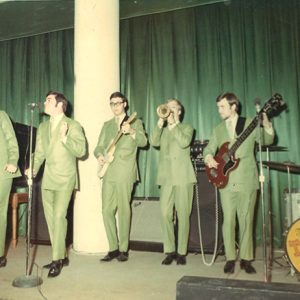 Merging Traffic
Merging Traffic 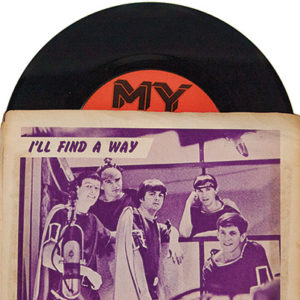 Romans Record
Romans Record 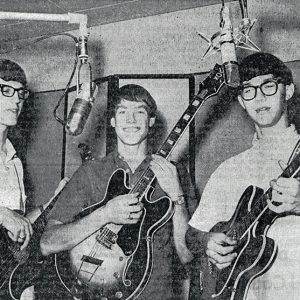 The Romans
The Romans 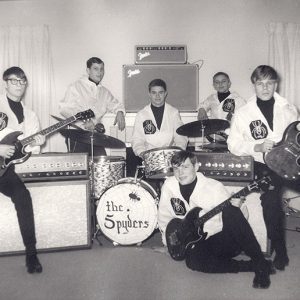 The Spyders
The Spyders 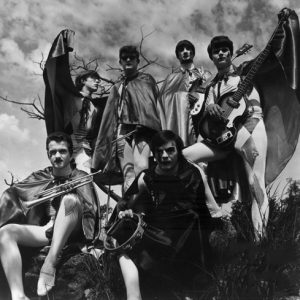 The Vipers
The Vipers 




Our group the Chessmen from Paris, Arkansas, played every town from Fort Smith to Russellville and beyond. We played dances, proms, state park pavilions, and even storefront windows. We posted flyers in dairy diners a week before we were to play at that town (in those days before the internet). We placed ads in the newspaper as additional marketing. Some forty years later, I met a person from Ozark who used to go to our dances. She saved a note that they passed in school about us playing and asking if they going to the dance. Her mother told her she couldn’t go because she didn’t want her daughter exposed to the likes of us (too much like the Beatles). She went anyway and got grounded.
Our dress was mod white collars and cuffs with stripes. We had to go to Fort Smith to buy them. Our second dress was blue blazers. I liked how the Beatles looked with no collars, so I went to the seamstress in Paris and took her the coats that we bought in Fort Smith. We told her to cut off the collars. She had a look on her face and said, “Does your mother know that you are doing this?” Of course I replied yes! Actually, my mom really liked them and thought the way we dressed was cool.
The Vipers were the hot regional band in northwest Arkansas from 1964 to 1967. They played as far east as Jonesboro, south to Little Rock, and north to West Plains, Missouri. They are one of the original garage bands in Arkansas, recording themselves in their rehearsal basement on a reel-to-reel tape recorder. They recorded at Chips Moman’s American Recording Studio in Memphis in 1966, but nothing materialized out of the session. In June 2001, I was interviewed about the band for The Lance Monthly, a news magazine dedicated to the garage band phenomenon. Parts of a video interview about the band are also included on the movie Teen-A-Go-Go, a 2010 feature film.
No Arkansas garage band story would be complete without mentioning the Vipers of Mountain Home: Bob Ahrens (organ), Hiram Byrd (trumpet), Bob Ketchum (drums), Gary Shelton (bass), Steve Tullgren (guitar), and Joe Summers (vocalist). Formed in 1963, they became the hottest band in northern Arkansas, playing the latest rock, R&B, and Memphis soul at parties and dances. In July 1966, Memphis producer Chips Moman invited them into his American Artists Studio. During the session, however, they learned that Moman was instead promoting Sandy Posey. The band began to record original songs in their rehearsal basement. In June 1967, they landed a summer job at the Lodge of the Four Seasons at the Lake of the Ozarks in Missouri. Their manager, Harold Koplar, who owned the Lodge as well as KPLR-TV and the Chase Park Plaza in St. Louis, decided the band needed a gimmick, so he sent them to be fitted for costumes and taught to use stage makeup. They returned as the Harlequin Vipers. Their outrageous look was ahead of its time (KISS was still years away), and audiences didn’t know what to make of them. The changes soon affected the band. They felt their music was taking a backseat and started living the stereotypical rock lifestyle, eventually resulting in the band’s demise. In August 1967, Koplar wanted to relocate the band to St. Louis, where they were promised their own TV show on KPLR-TV with host Johnny Rabbit, a popular St. Louis DJ. But they had grown weary of the costumes, feeling as silly as they looked. Their last performance was in 1968. Ironically, they got a taste of fame when one of their recordings of an original song was included in a compilation CD of 1960s Arkansas garage bands released on Gear Fab Records in 2008.
Back when the Romans were the Romans, I did all of their booking and managing. Their parents looked to me as their chaperone also. In fact, I had to beg Bob Younts’s parents to even let him travel with us to play sax. They dressed in Roman togas (à la Paul Revere and the Raiders) to fit their name. I had a small horse trailer converted to a chariot to carry their equipment and to parade the band through towns like Fort Smith to promote concerts. I made them practice every day after school developing their sound and choreography, with the kindness of the owners of E&M Recording Studio (Mr. Fox and Mr. Hansen) allowing us the space to do so. I put over 100,000 miles on my car in one year and never left the state of Arkansas.